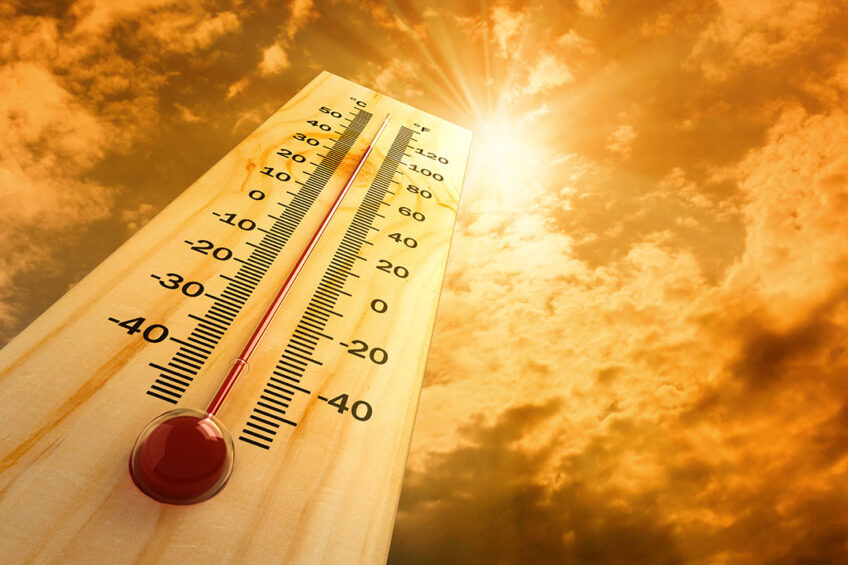Relief for drought afflicted European dairy farmers

The European Commission is offering support to farmers faced with the drought afflicting Europe. Farmers will be able to receive a higher percentage of their direct and rural development payments in advance, and, in order to feed their animals, they will be granted greater flexibility to use land that would normally not be used for production.
July 2019 was reportedly the hottest month in Europe since 1880. The drought experienced in this region has made farming particularly challenging for dairy farmers. In Lithuania, for example, over 2,000 dairy farms have discontinued milk production.
Commissioner for Agriculture, Phil Hogan: “These prolonged climate conditions are worrying for our farmers. The Commission remains in close contact with the Member States and is evaluating the situation on the ground … we have decided to implement higher advance payments and derogations from certain greening rules to make it easier to produce animal feed.”
In addition to support available under the Common Agricultural Policy, 2 decisions have been taken to assist farmers:
- Farmers will be able to receive higher advance payments. Up to 70% of their direct payments and 85% of rural development payments will be available as of mid-October to improve cashflow.
- Derogations from certain ‘greening’ requirements will be allowed. These derogations will apply to crop diversification and ecological focus area rules on land lying fallow. Consideration is also being given to the adoption of other types of derogation from ‘greening’ to grant farmers greater flexibility to produce fodder.
The European Milk Board, which lobbies for milk producers in Europe, has highlighted some specific situations in some of the member countries:
Belgium
Milk and meat production in Belgium have decreased due to the heat wave in late July. Especially Western and central Wallonia are very dry. The east, on the other hand, has been able to maintain better pastures due to more rain. In some regions, milk producers have already had to dip into their winter reserves as there is no new grass due to the drought.
France
Regions in central and eastern France are facing a major drought. Livestock farmers in drought-stricken areas have already started using their winter feed reserves. A decrease in the number of heads of cattle has also been observed as many dairy farmers have sold off part of their herd because of the scarcity of feed.
Germany
The local situation in Germany varies. Some regions received occasional rain, while other areas have received less than 60mm/m2 since April. Federal aid is being provided in some areas where farmers are now permitted to use fallow land or ecological focus areas for feed under certain conditions.
Netherlands
Farmers, particularly in the eastern provinces, have had to manage the situation caused by the drought. Milk producers are already obliged to buy in feed or dip into winter reserves. High feed prices, especially maize, and the falling milk price have led to tight finances. Furthermore, the number of rodents has increased in the north of the country. They damage the grass roots, which damages the crops.
Luxembourg
Temperatures of 40.8 degrees were experienced in Luxembourg, and a major tornado hit southern Luxembourg in August, also causing significant damage. The winter crop harvests were within the annual average, but things do not look good for the summer food-grain harvest. Grazing on pastures for dairy cows continues to be difficult. Furthermore, like in the Netherlands, the number of voles have increased exponentially due to the drought. All these reasons mean that dairy farmers have to buy in feed. In some cases, they are selling off heads of cattle to compensate for some of the generated costs.
Switzerland
The general situation in Switzerland is not as catastrophic as compared to previous years thanks to regular downpours. However, some areas have experienced severe droughts, which has led to the implementation of agricultural emergency measures in some regions. For example, farmers are permitted to mow biodiversity promotion areas or to let their livestock graze on them. The objective of these measures is to allow farmers to conserve their winter reserves.
Lithuania
The drought in Lithuania (from April to July) negatively impacted many dairy farms in terms of feed production. The cereals sector has also been severely affected. Milk prices have been decreasing since April. Over 2,000 dairy farms have discontinued milk production. These are mainly small farms and include a significant number from our Lithuanian member organisation. A difficult winter with major feed shortages and the closure of more farms is expected.
Source: European Milk Board
Join 13,000+ subscribers
Subscribe to our newsletter to stay updated about all the need-to-know content in the dairy sector, two times a week.










